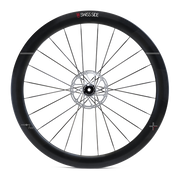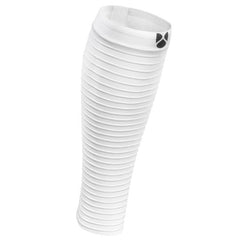In the world of cycling, one question has sparked endless debates: Which matters more, aerodynamics or weight? For years, the cycling industry and enthusiasts alike have placed disproportionate emphasis on shaving grams off bikes, but is lighter always better? In this blog, inspired by the Swiss InSide podcast with Daniel Welsch and Jean-Paul Ballard, we break down the truth about aerodynamics, weight, and performance.
Aerodynamics vs. Weight: The Core Debate
The Reality of Aerodynamic Drag
In cycling, the biggest force working against you is aerodynamic drag. This is especially true on flat and rolling terrain, where drag can account for up to 90% of the resistance a rider faces.
Weight only becomes a significant factor during steep climbs. However, even on hilly routes, aerodynamic efficiency often plays a larger role in overall speed and performance.
The Physics Behind the Debate
Flat Terrain: Aerodynamics dominates because drag increases exponentially with speed.
Climbing: Weight becomes a bigger factor, but reducing drag (e.g., with a low frontal profile) still contributes meaningfully to performance.
Downhills: A heavier bike with optimized aerodynamics can actually descend faster.
Myth: A lighter bike is always faster.
Fact: Aerodynamics can yield greater performance gains than weight reduction.
Here’s why:
Aerodynamic Drag: At speeds above 15 km/h, drag overtakes weight as the primary resistance.
Real-World Testing: Studies show that riders on slightly heavier but more aerodynamic bikes often outperform those on ultra-light setups.
Key Areas to Focus On:
Body Position: Your position accounts for the largest share of drag. Focus on achieving a low, streamlined posture.
Aero Wheels: Invest in aero wheels to minimise turbulence and leverage effects like sailing in crosswinds.
Tires: Wider, aerodynamic tires with low rolling resistance can improve both speed and comfort.
The Cycling Industry’s Bias Towards Weight
The cycling industry has historically emphasised weight because it’s easy to market: “lighter is better” resonates with riders. However, this narrative often oversimplifies performance dynamics, ignoring the critical role of aerodynamics.
Real-World Example:
Swiss Side’s aerodynamic testing shows that riders who optimise their aero setup - through wheels, cockpits, and body position - gain far more speed than those shaving grams off their bike.
The Sailing Effect: A Game-Changer for Windy Conditions
Modern aero wheels are designed to take advantage of the sailing effect, where crosswinds create a forward thrust, effectively reducing drag. This design principle highlights how aerodynamics isn’t just about going fast—it’s also about riding efficiently in real-world conditions.
Practical Tips to Balance Aero and Weight
Optimise Body Position: Tackle drag at its source by refining your riding posture.
Invest in Aero Equipment: Start with wheels and cockpit designs to get the most bang for your buck.
Understand Terrain: On flat and rolling routes, prioritise aerodynamics; on steep climbs, balance weight and drag considerations.
Rethink Tires: Choose tires that enhance aerodynamics without compromising grip or comfort.
Test Your Setup: Use real-world testing to determine how aero changes impact your performance.
Key Takeaways
Aerodynamic drag is the dominant resistance in cycling, especially on flat and rolling terrain. Weight is often overemphasised, leading to misguided priorities in bike design and upgrades. Aero wheels and optimised setups yield substantial performance gains. The sailing effect demonstrates how aerodynamics thrives in real-world conditions. Focus on body position and equipment design before worrying about weight.
Final Thoughts
The next time you’re tempted to drop thousands on a lighter bike, ask yourself this: Could the same investment in aerodynamic upgrades make you faster? In most cases, the answer is a resounding yes. Understanding the balance between aerodynamics and weight is key to unlocking your full potential as a cyclist or triathlete.
Explore our cutting-edge solutions and start riding smarter today!
(c) Getty Images



Leave a comment